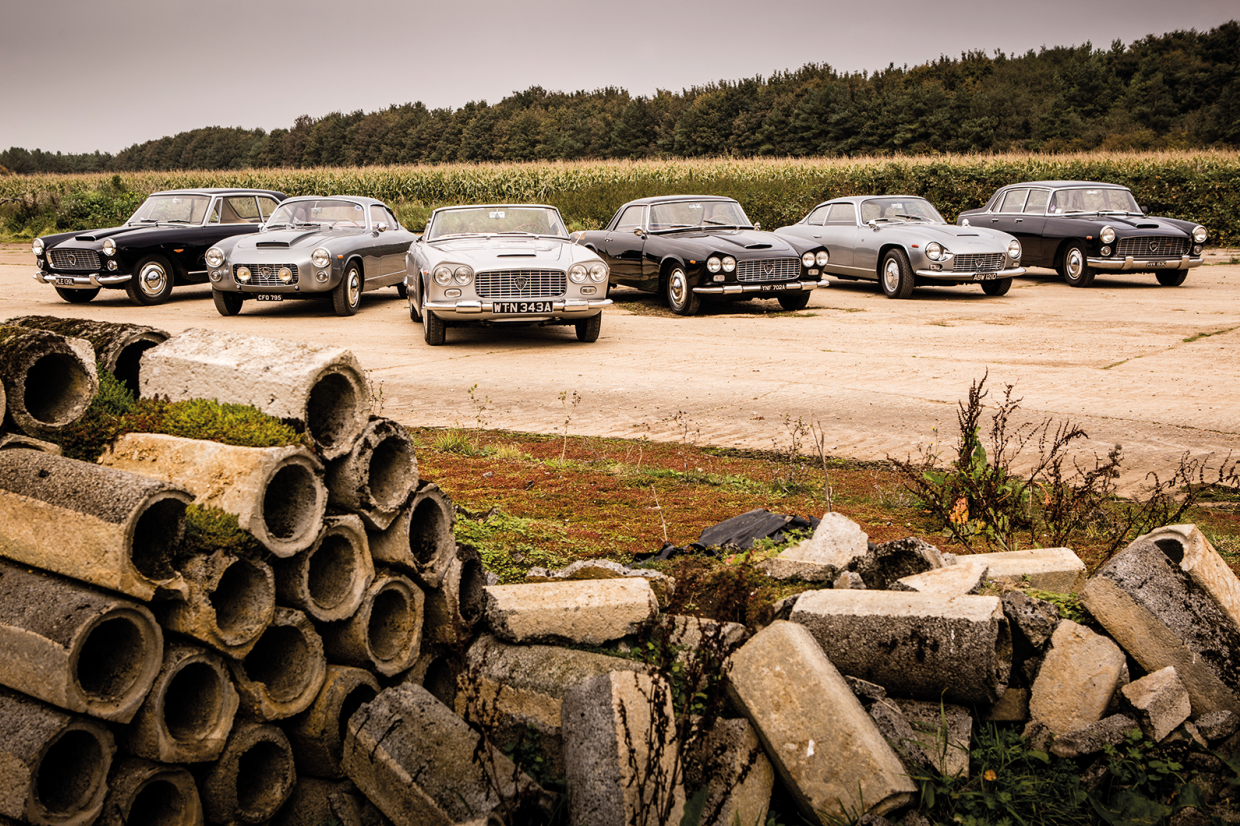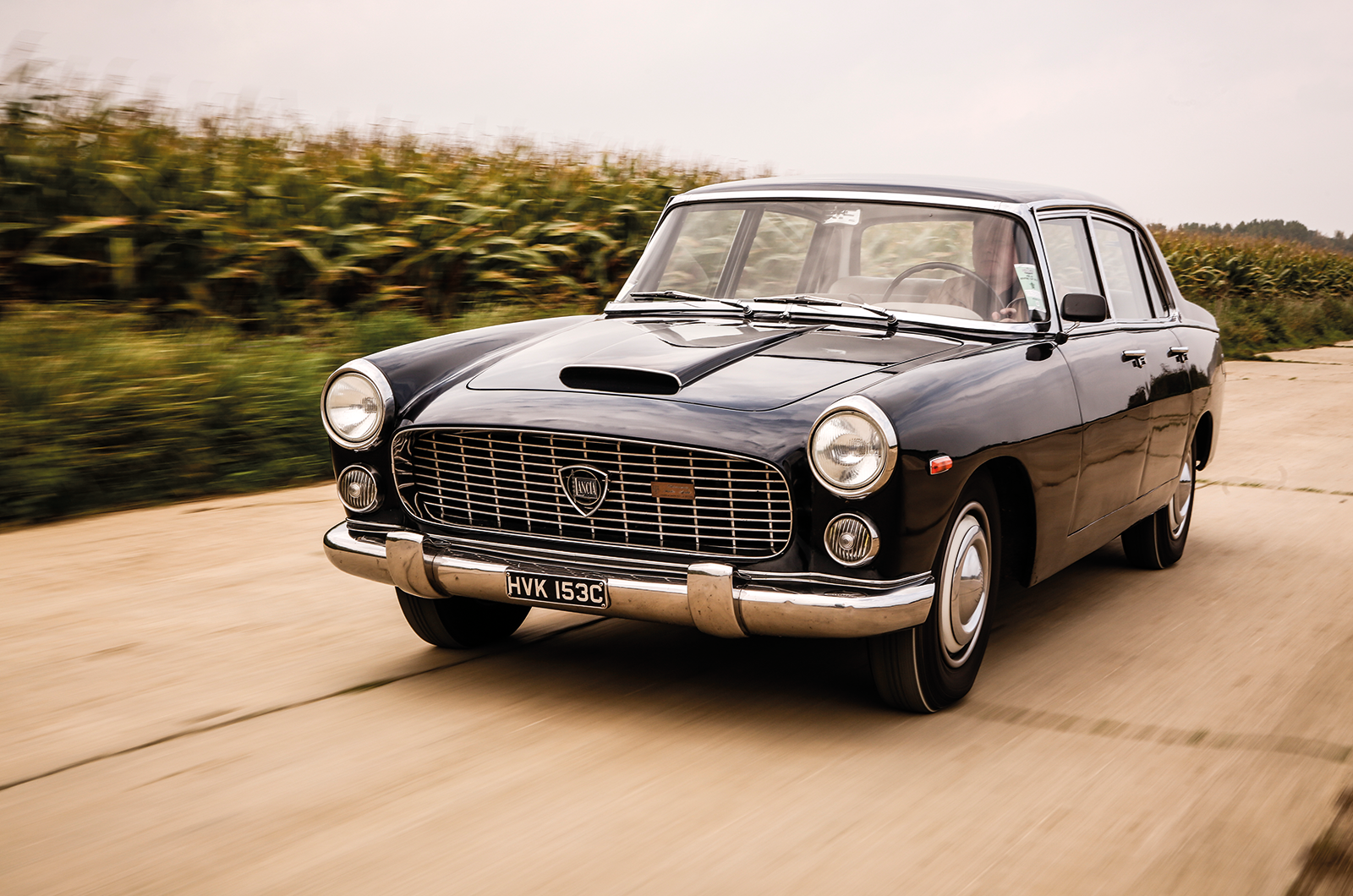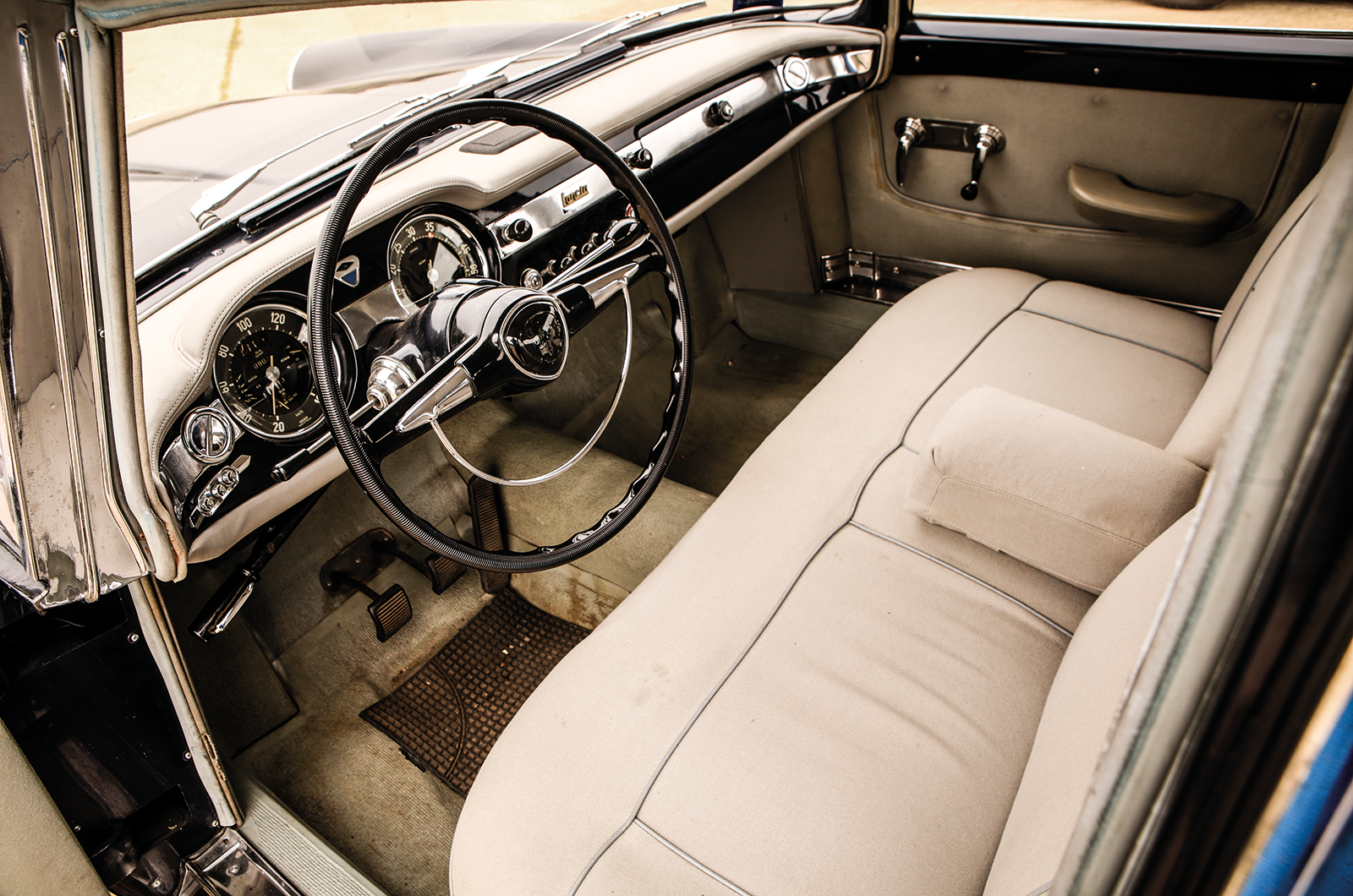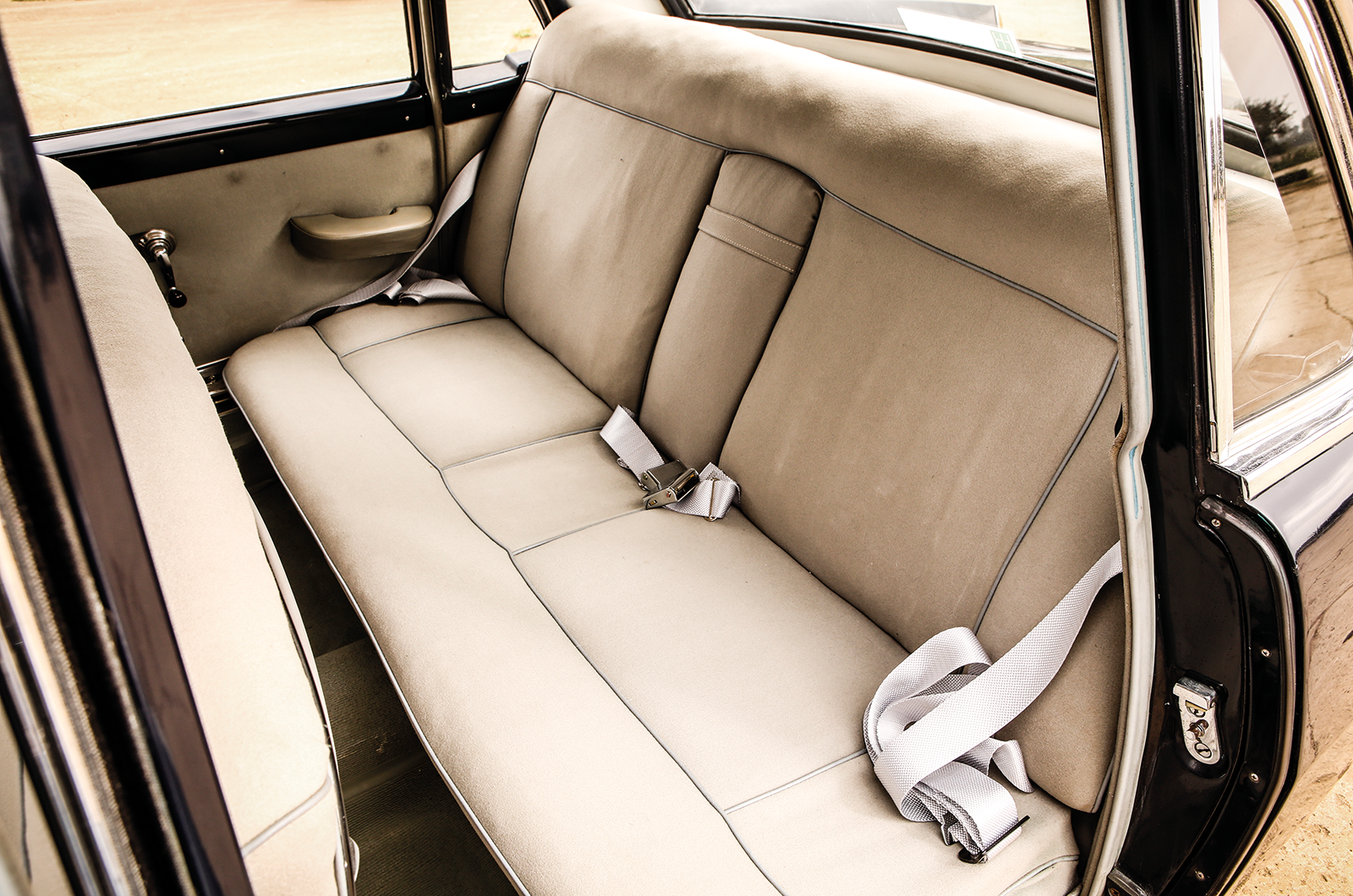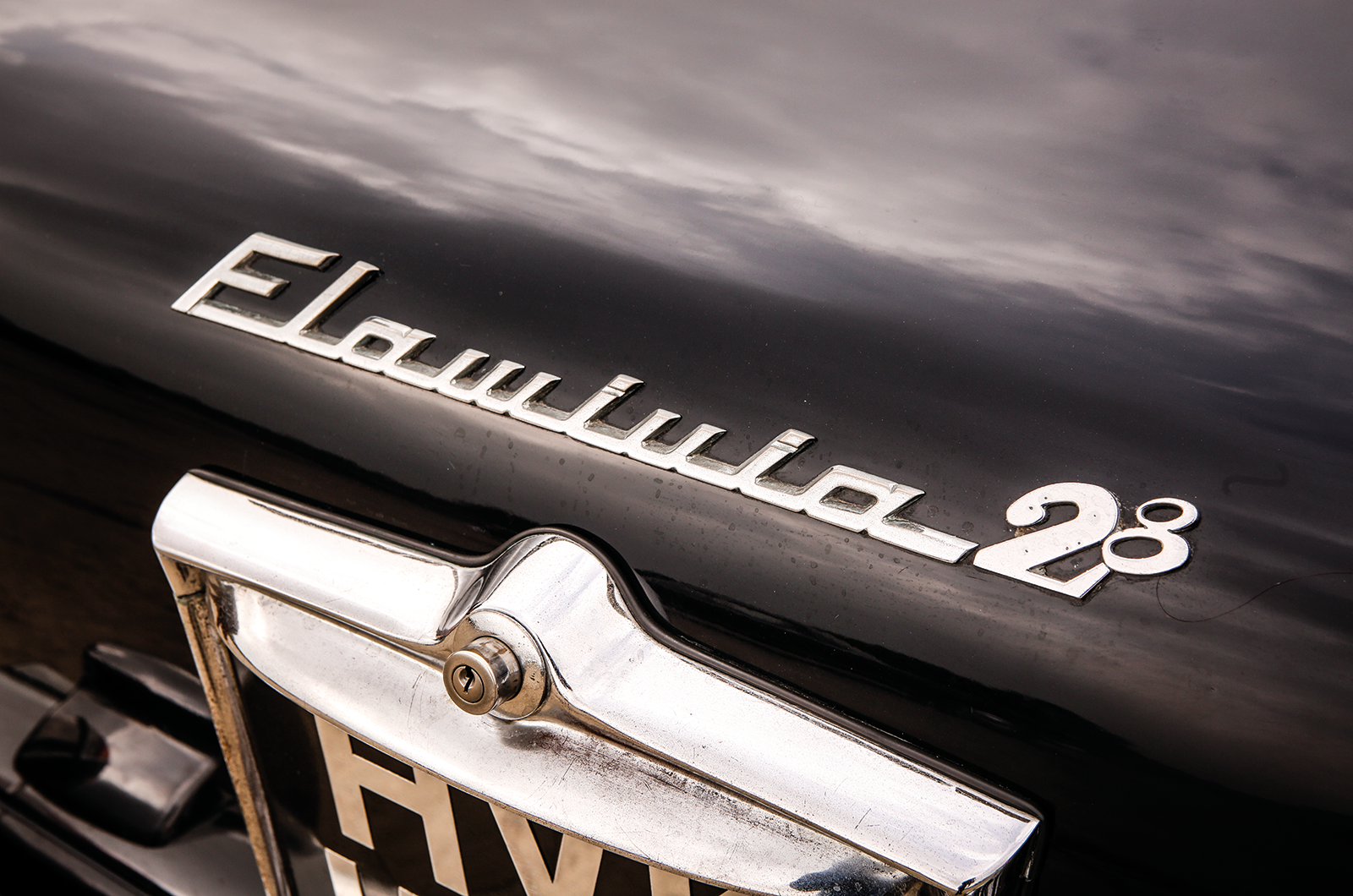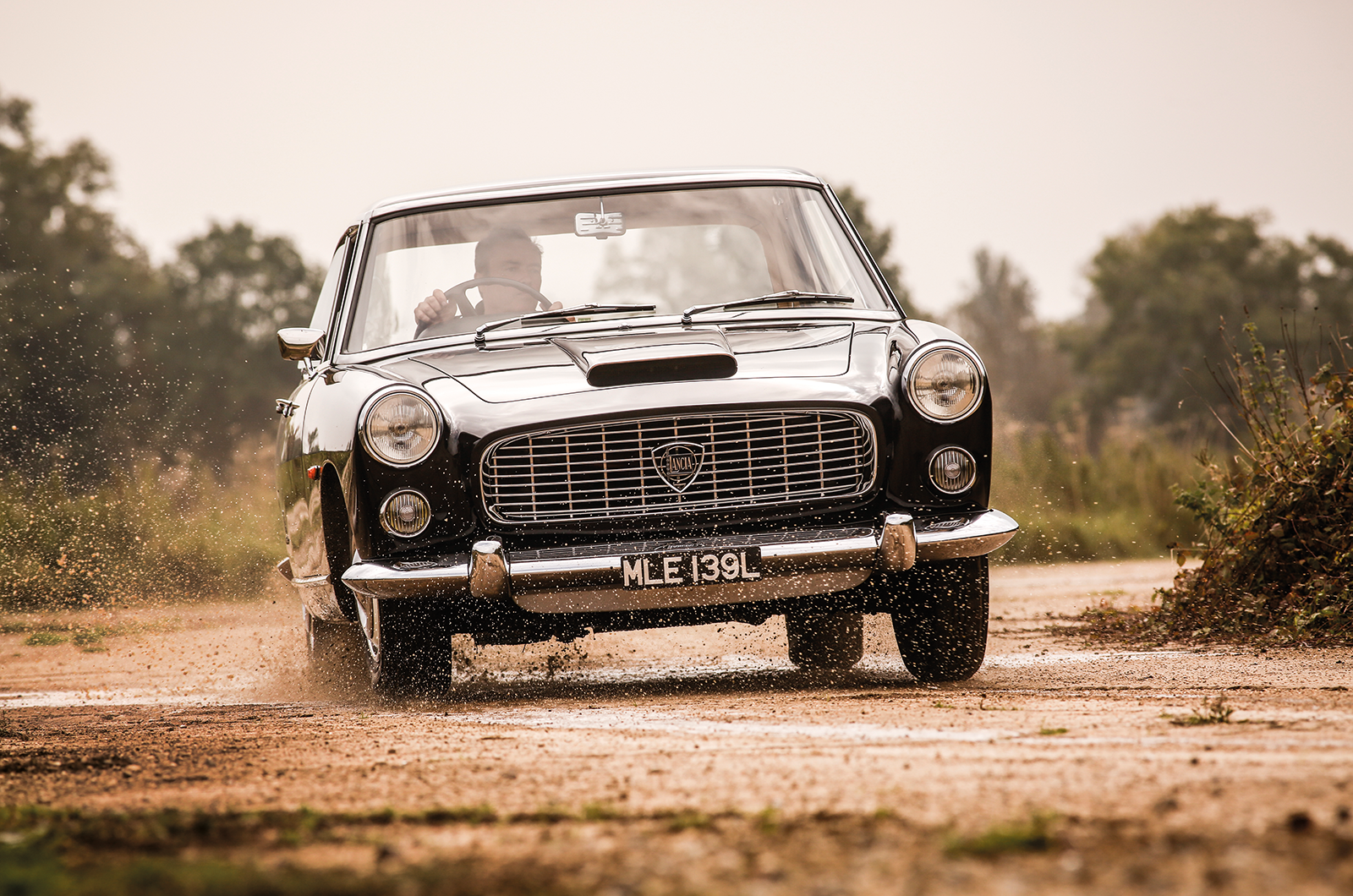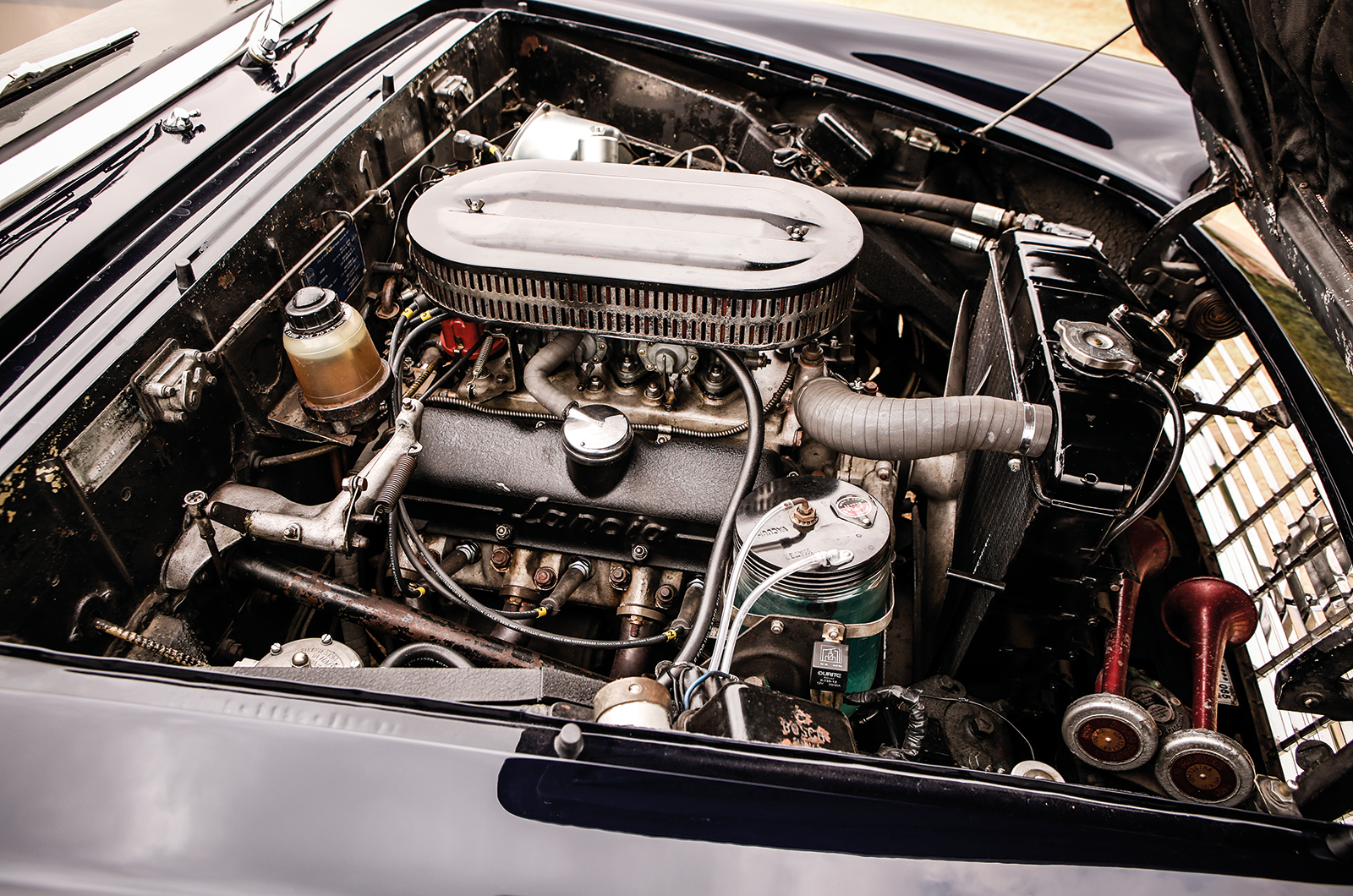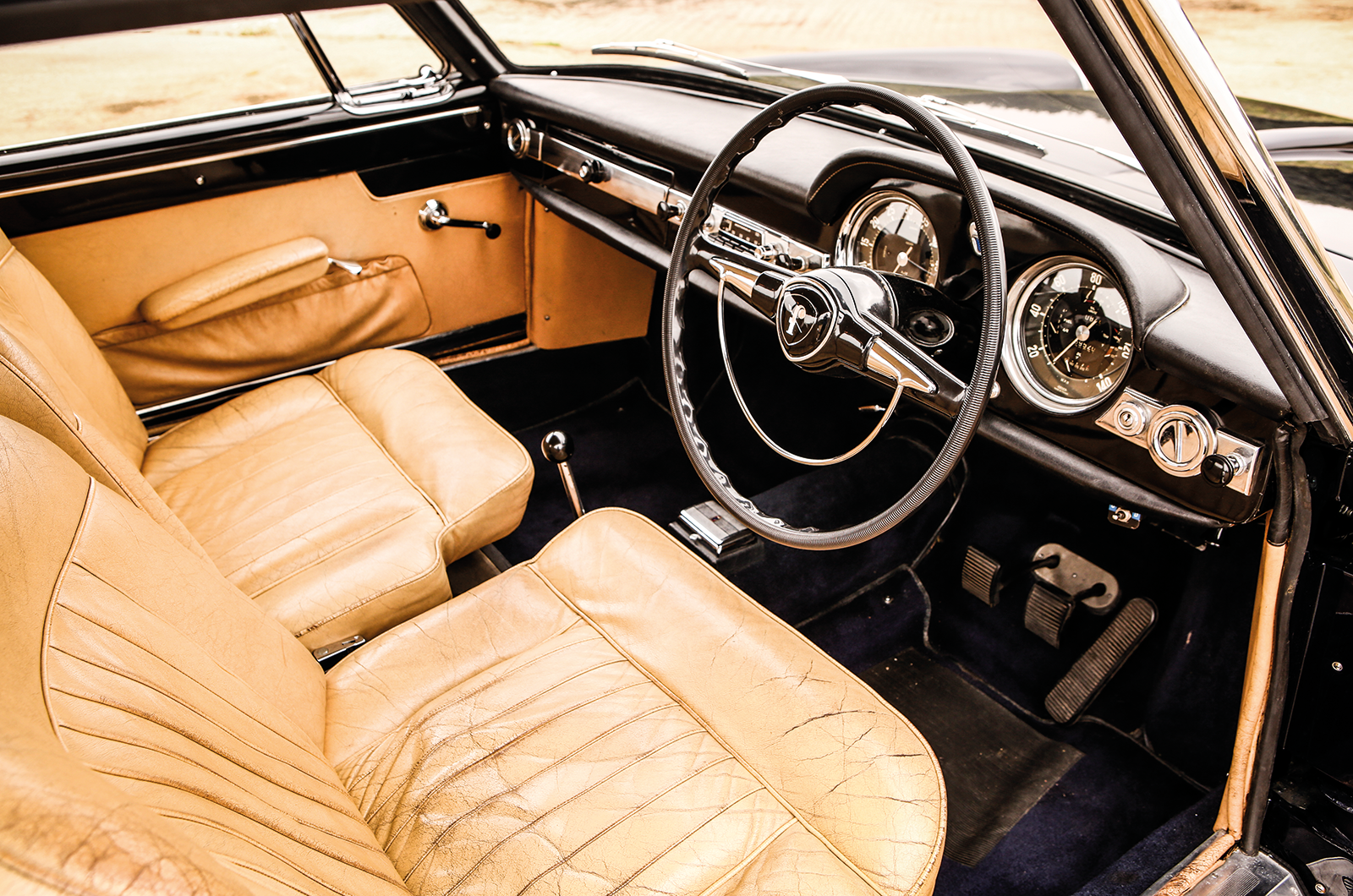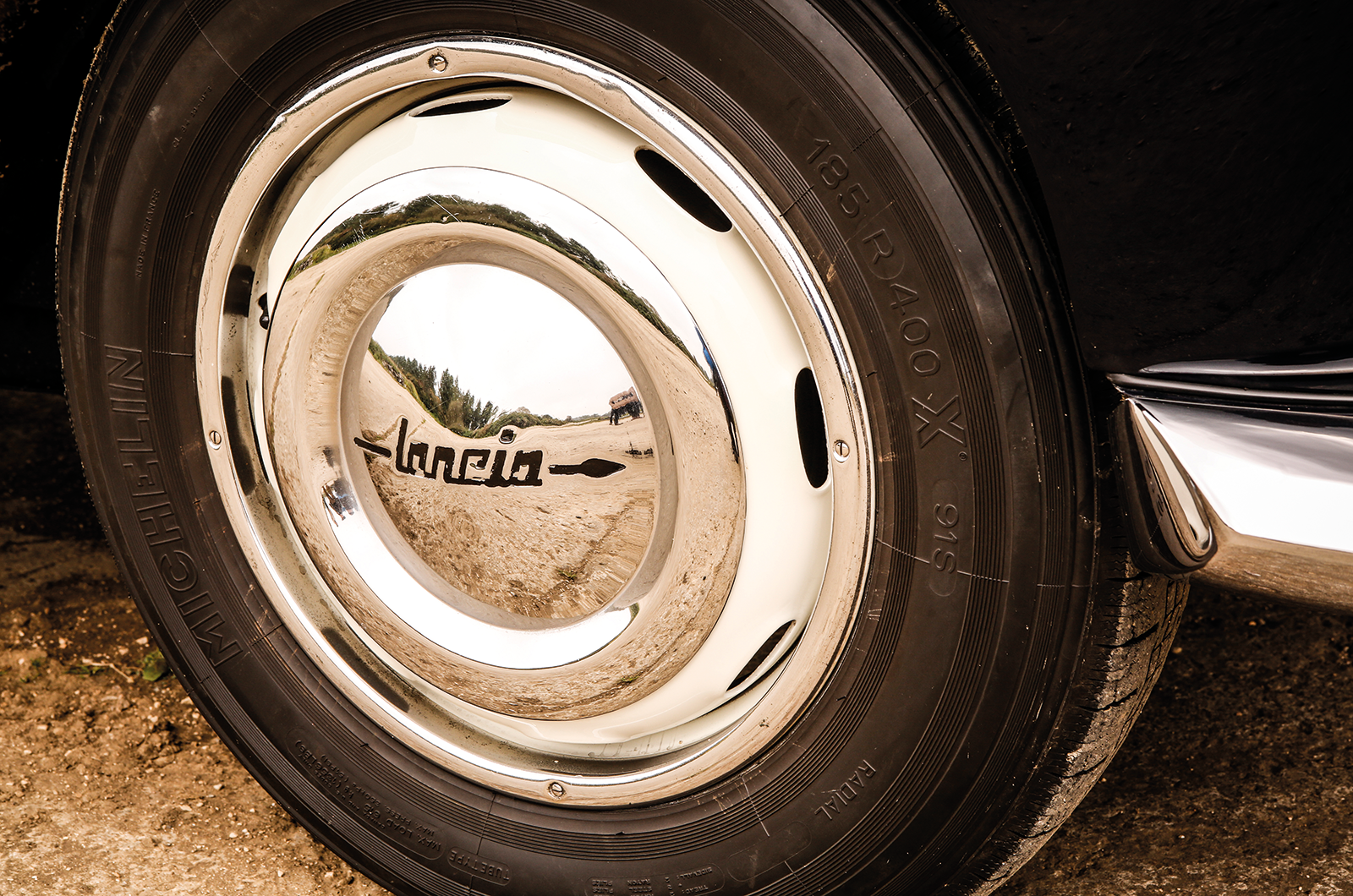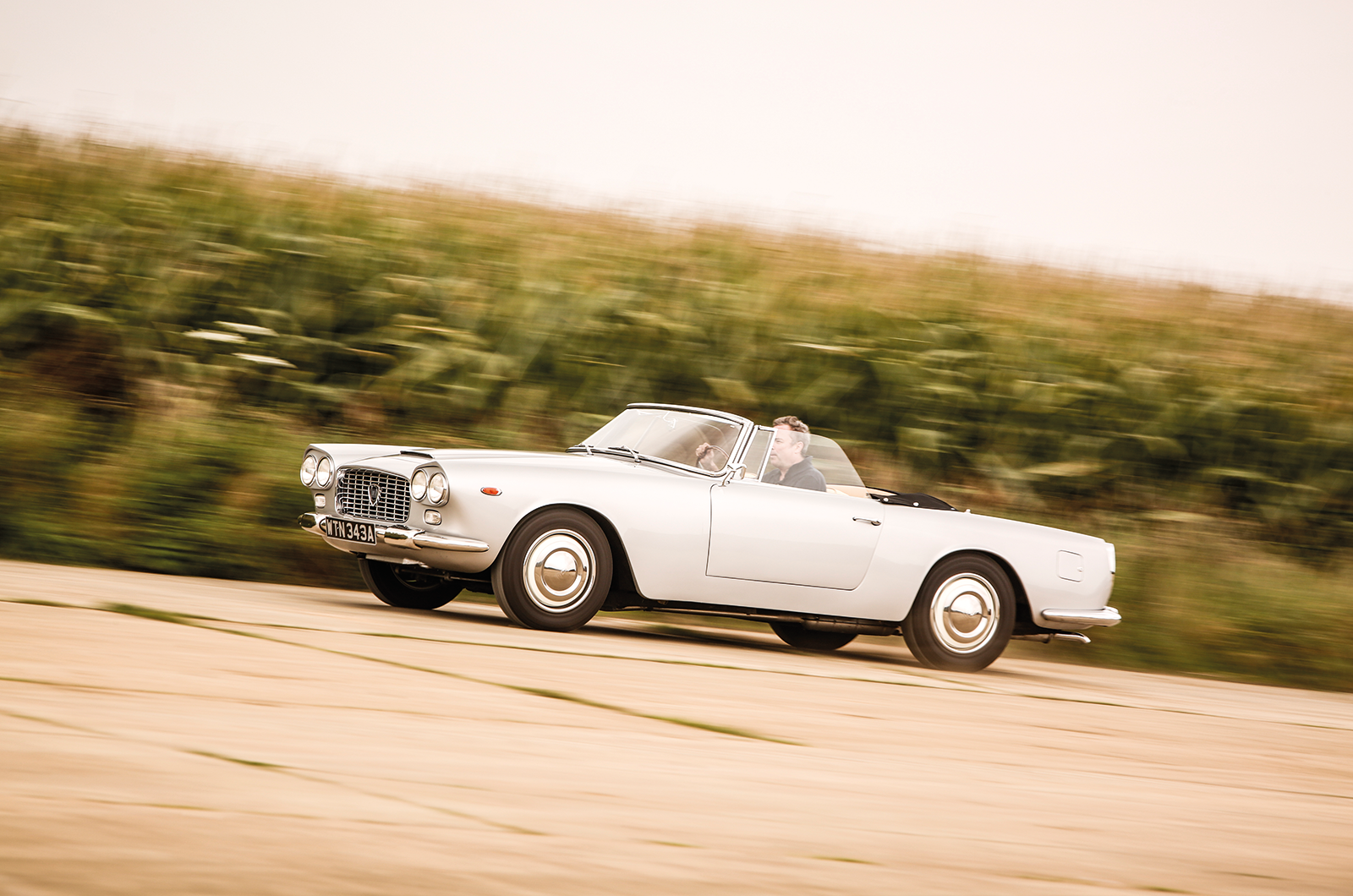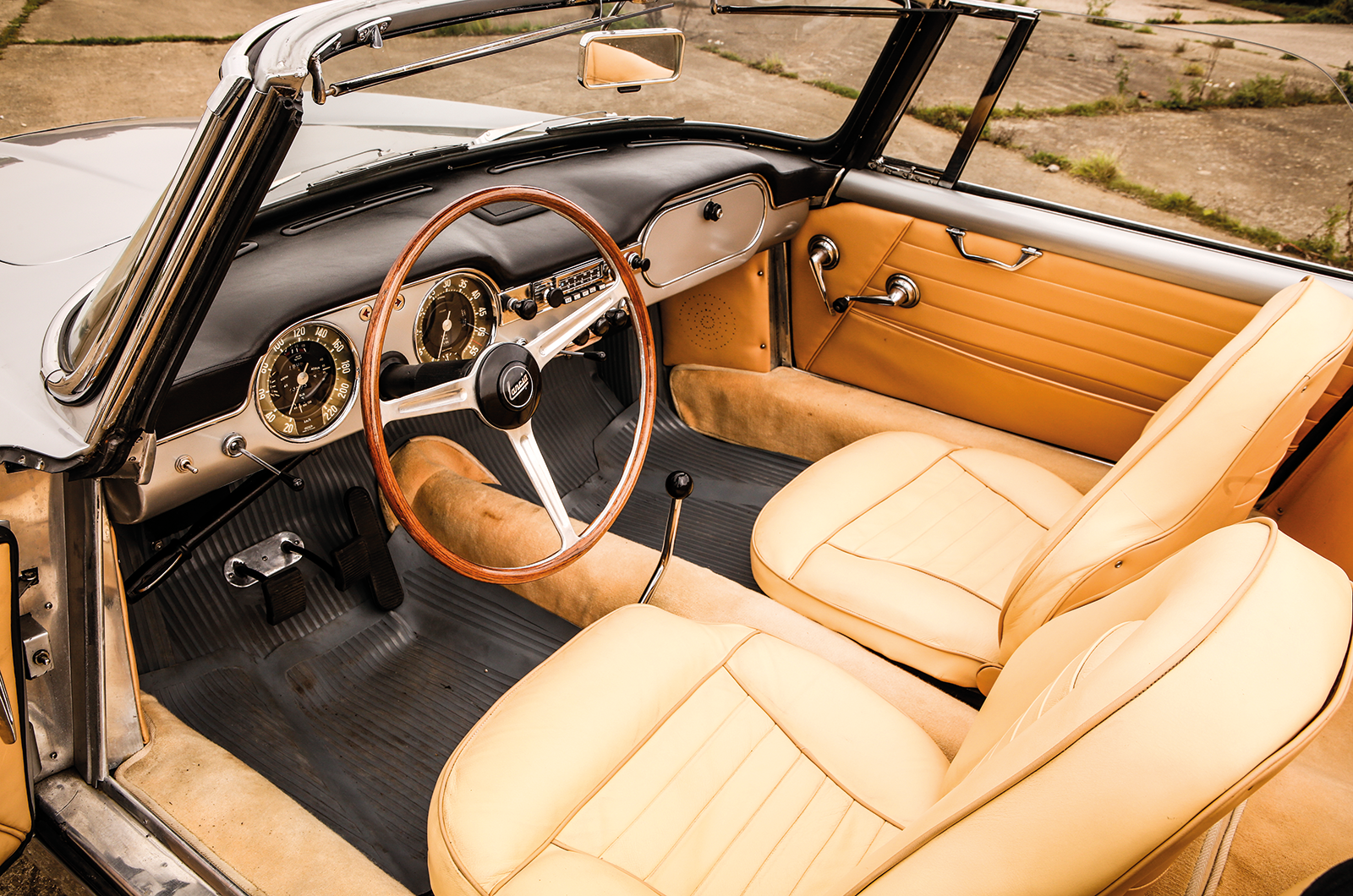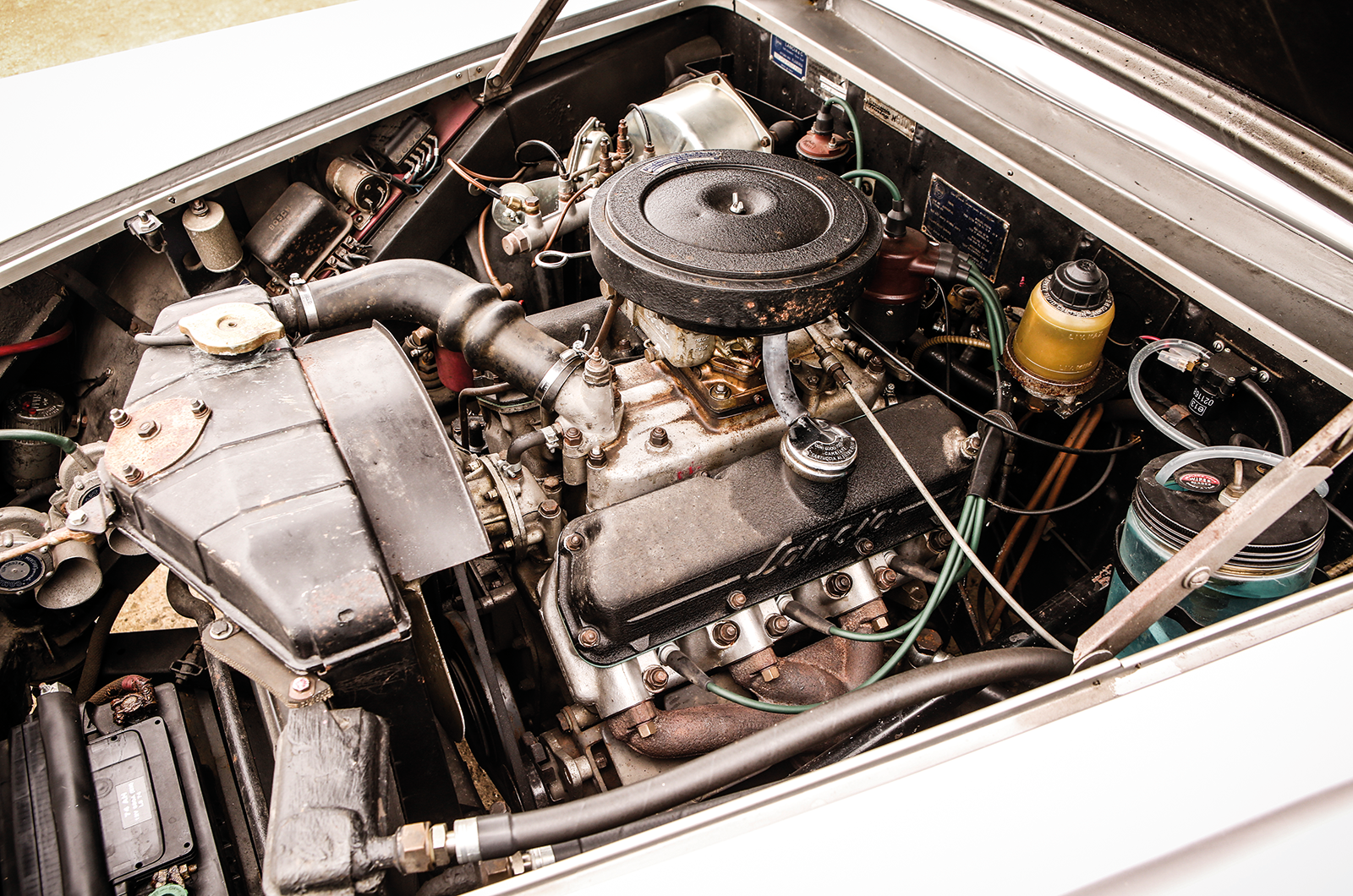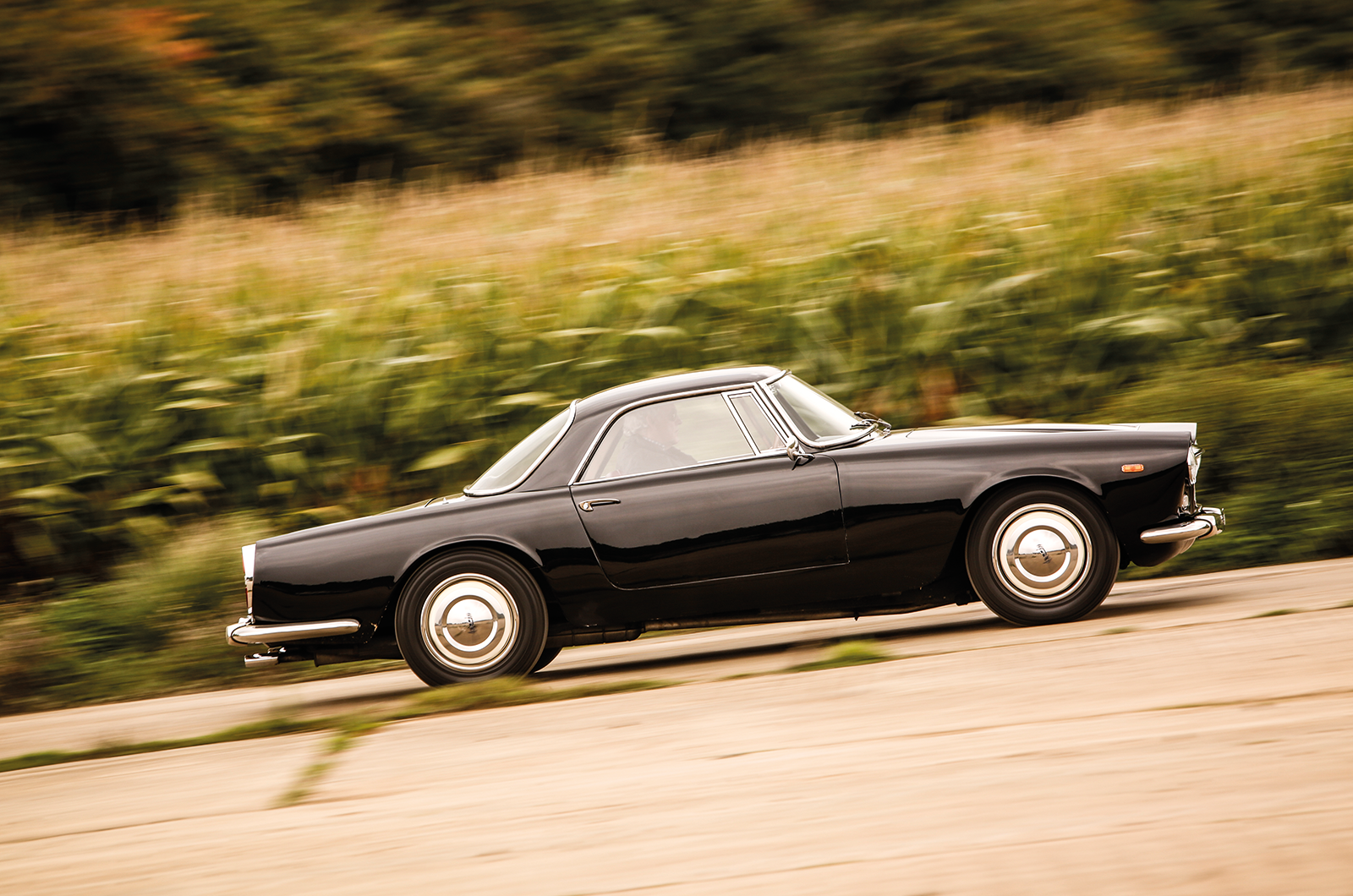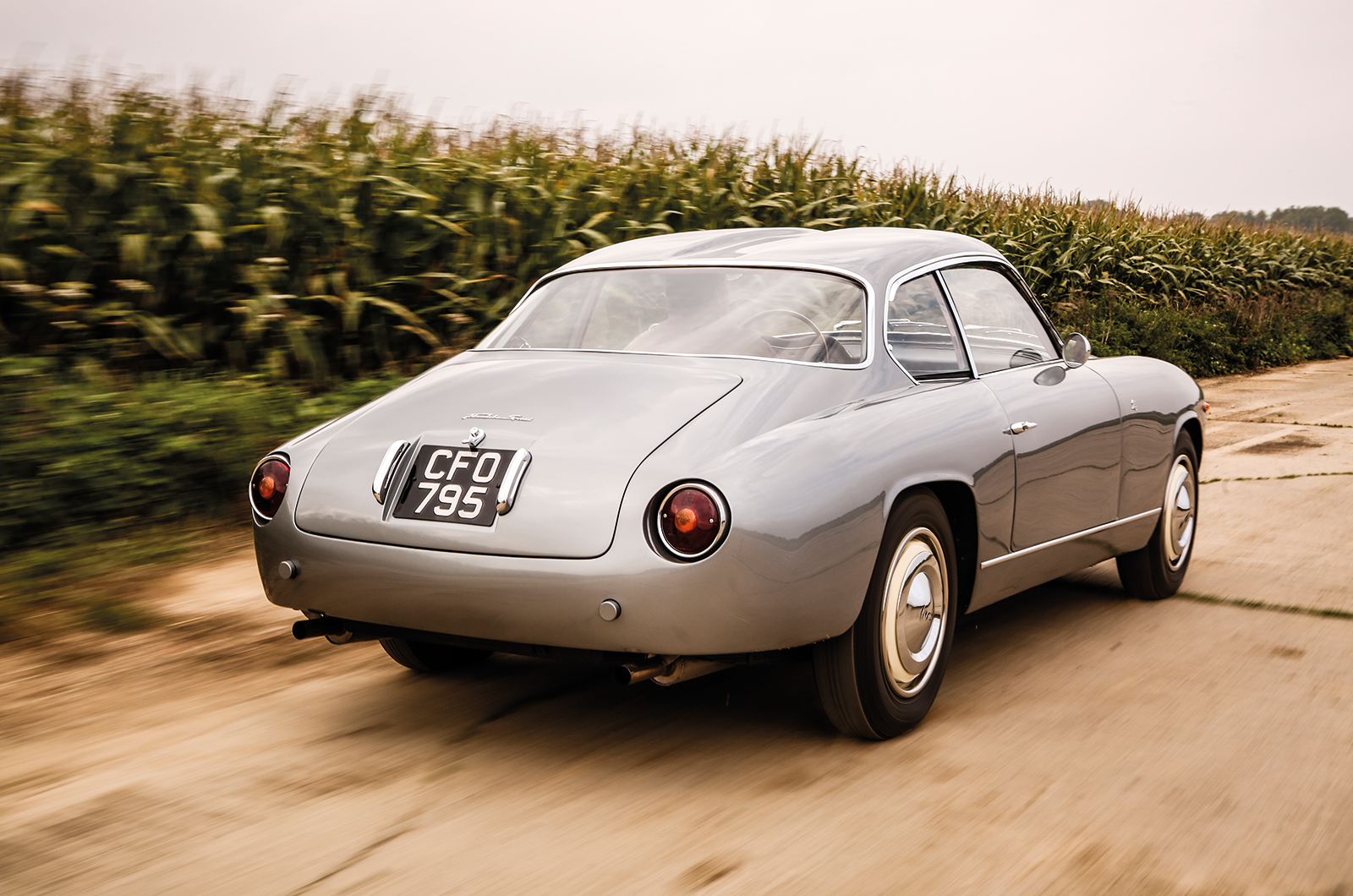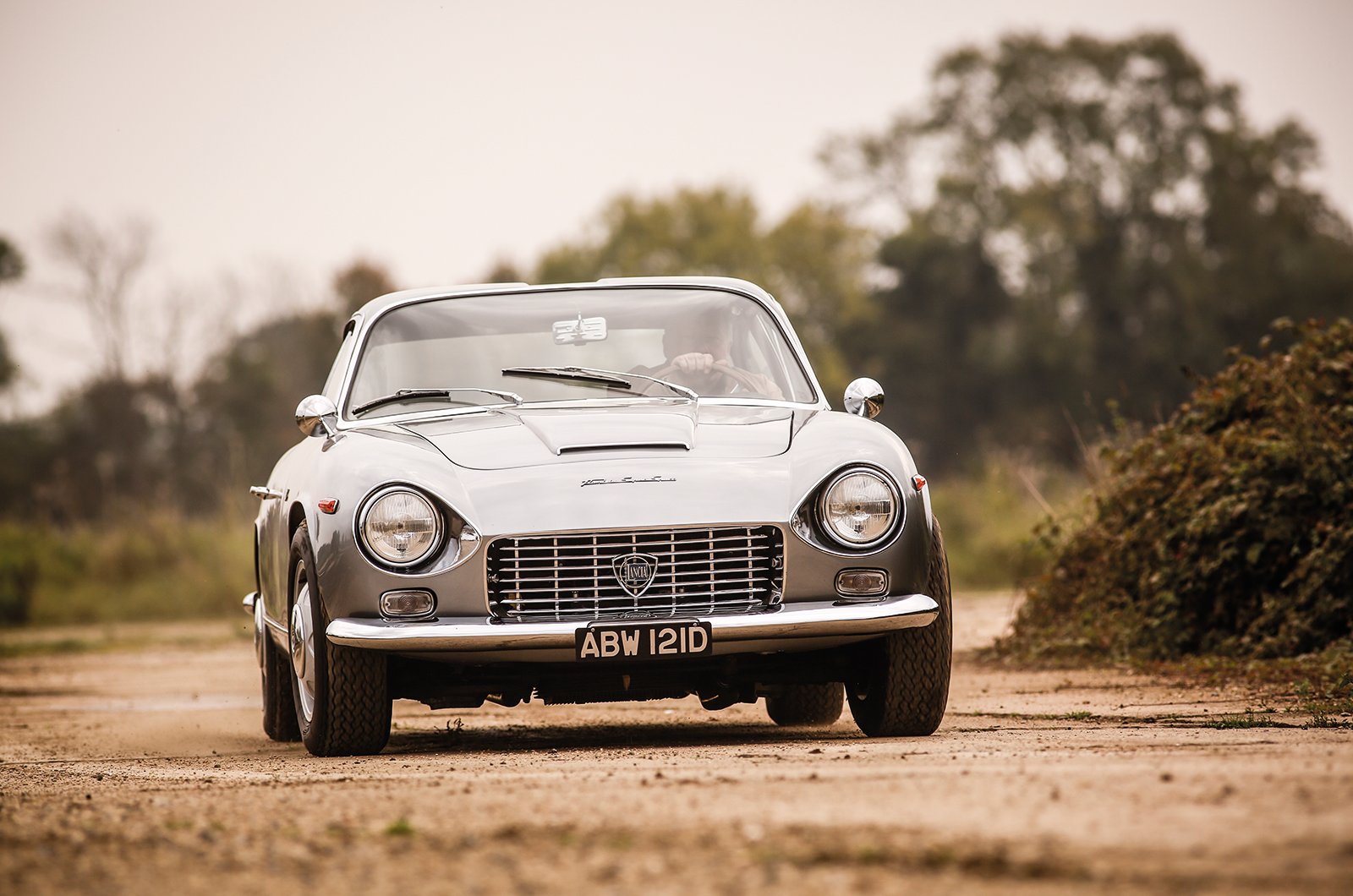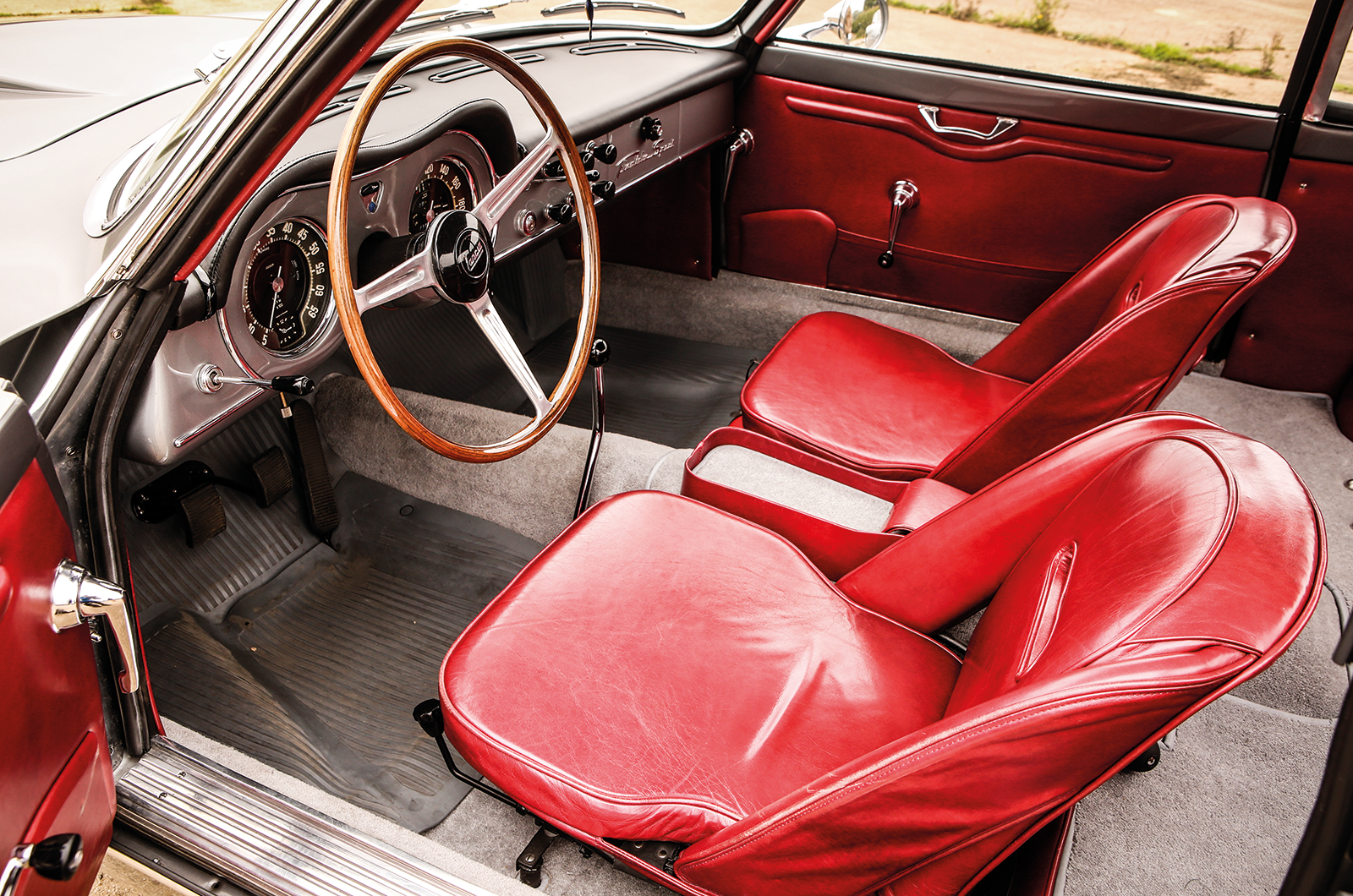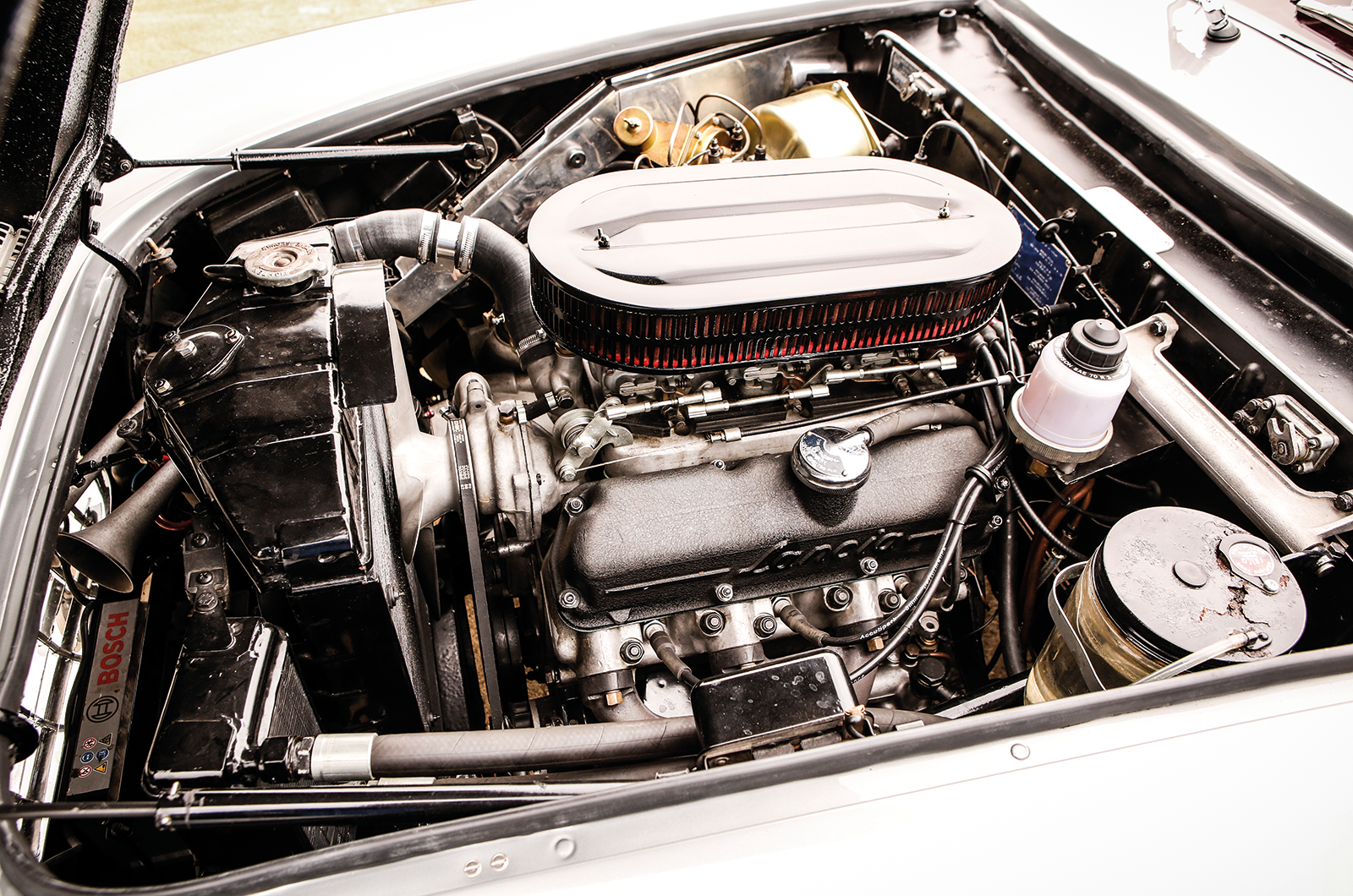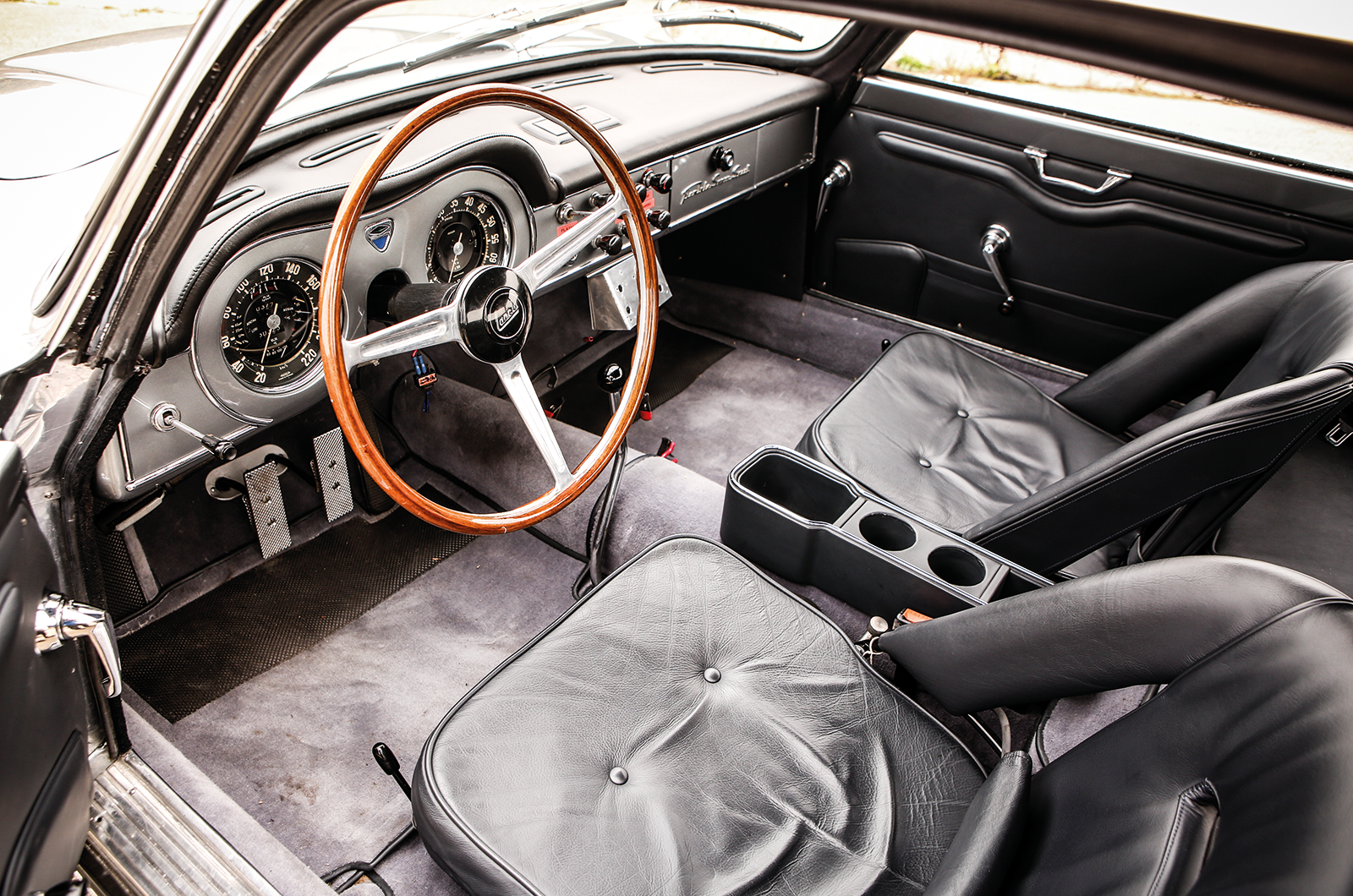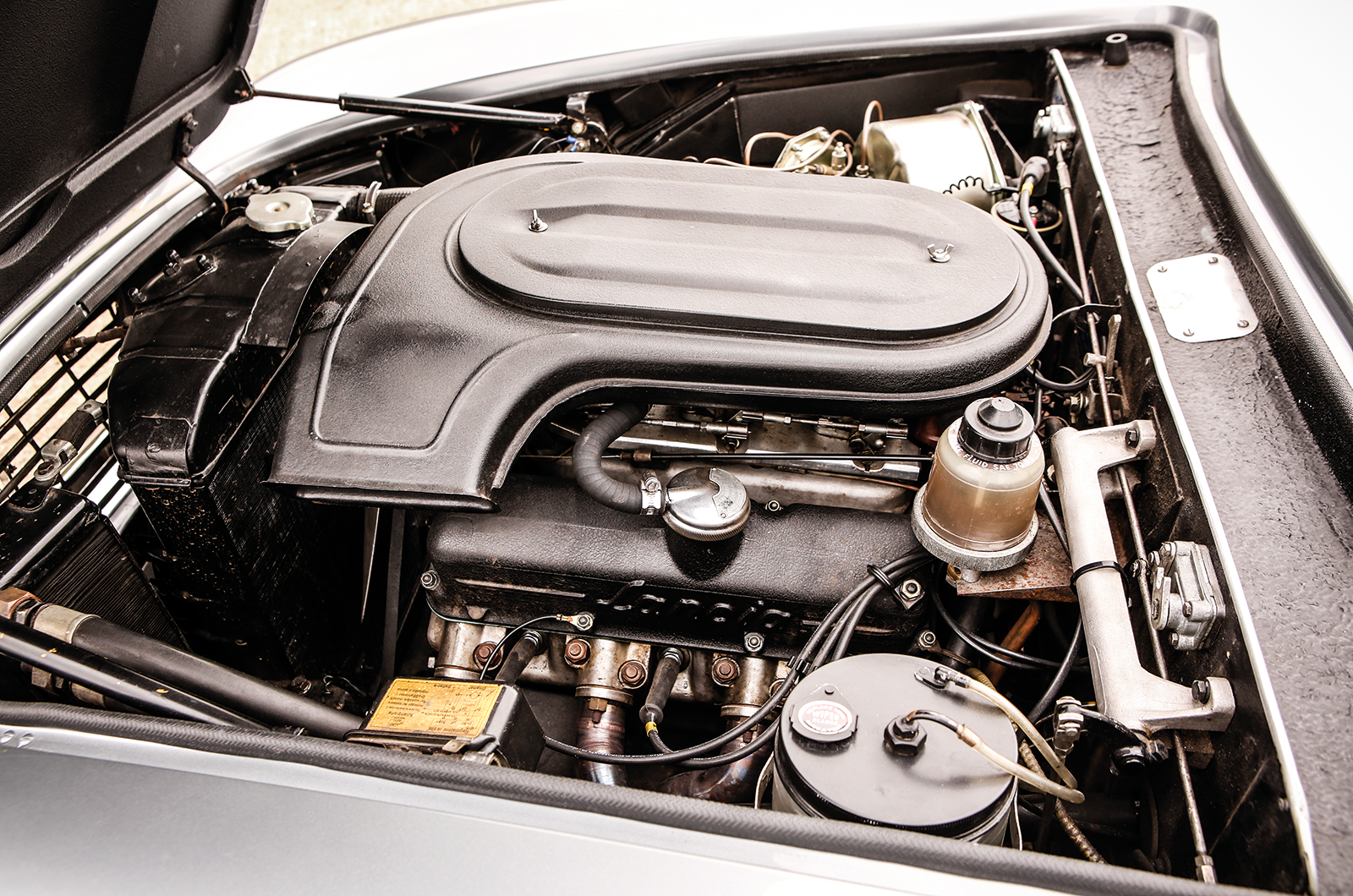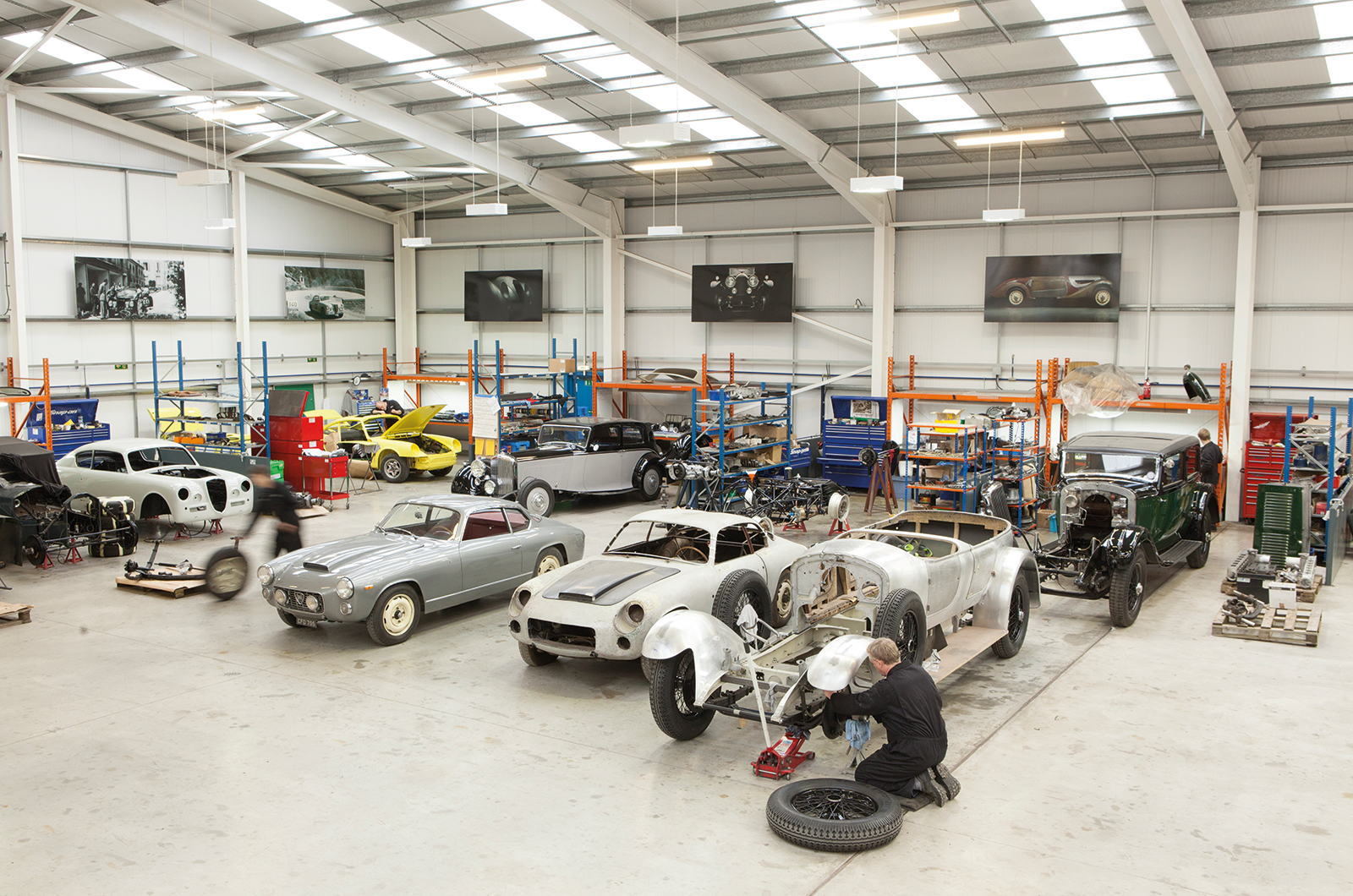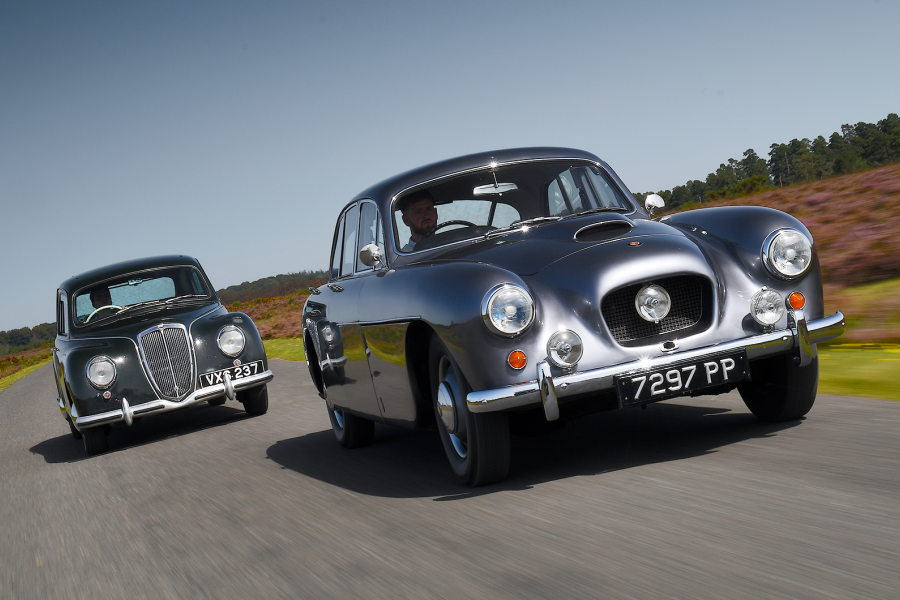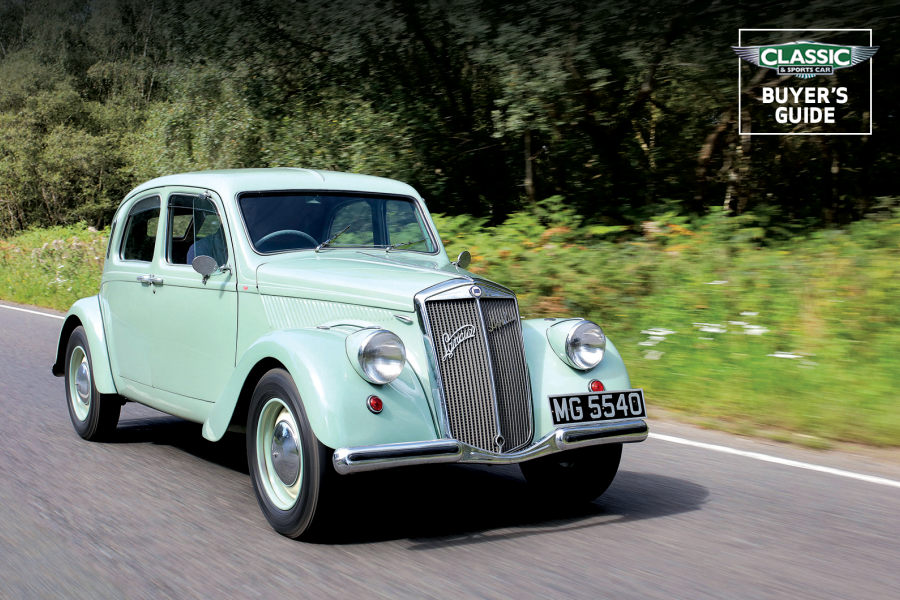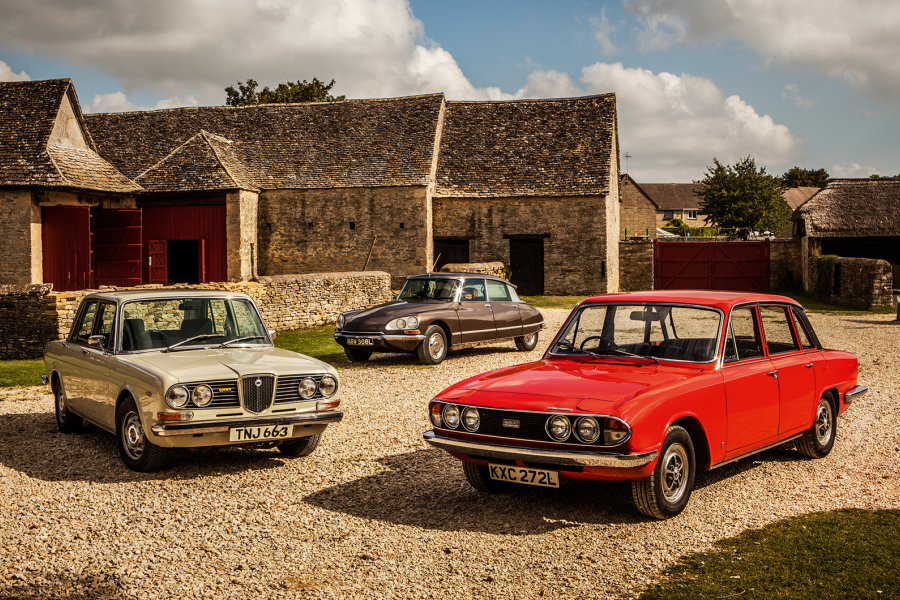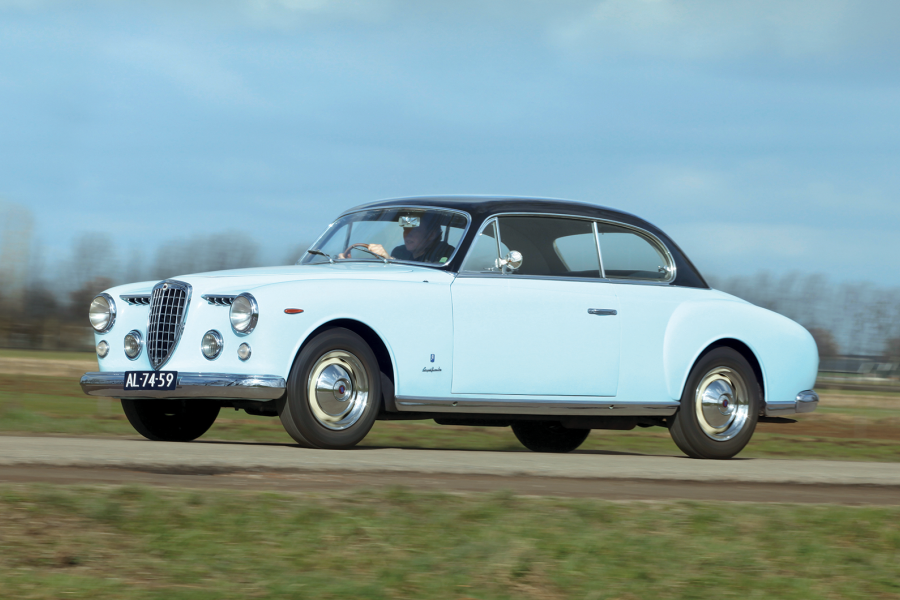While they accounted for fewer sales (526), the Sports and Super Sports have a much more complicated production history that seems
to highlight the marginal existence of the Flaminia within the increasingly chaotic Lancia empire of the 1960s. Compared to the more commercially important Flavia and Fulvia, the model had become a bit of a distraction.
The first 99 Flaminia Sports had faired-in headlights and the 119bhp engine, and would do a claimed 112mph. From 1960, another 100 single-carb cars were built with exposed lights until the introduction of the Sport 3C with the 140bhp triple-Weber unit.
Zagato made 174 of those in 1962 and ’63, still with the exposed lights that sat nearly flush with the grille. A further 70 were built with the 2.8-litre 146bhp 3C engine, although the production figures are clouded by the fact that many earlier cars were upgraded with later 3C V6s. The faired-in lamps made a return on the Super Sport (1964-’67, 150 produced) with a Kamm tail and DCN Webers with 40mm chokes, boosting power to 150bhp.
James Henderson’s 1963 Sport has been fully rebuilt by Thornley Kelham and fitted with a 2.8 Super Sport engine. Peter Blenk has owned his ’66 Super Sport for 15 years, and it shares his affections with an Aprilia restoration project.
1966 Super Sport is the most powerful car here, but the Lancia ethos is about nimble handling more than outright speed
These Zagato-bodied cars are flowing swathes of purposefully fashioned aluminium sheet, with hunched double-bubble tops, minimal brightwork, elegantly sketchy leather trim and sensuous views along well-muscled bonnets.
Inside and out, they have the feel of bespoke jewellery and, more than the other Flaminias, you ‘wear’ them rather than simply sit in them. There is an acute awareness of their extremities and a seat of the pants/tips of the fingers connection to the way they steer and stop that gives the Sport and Super Sport an additional edge of excitement, although they are far from being lairy.
They are smooth and flexible, with the same easy, direct action to that disembodied piece of bent tube that forms the gearlever.
Clockwise from top left: body-hugging seats add to sporting character of the Sport; this car has a 2.8 Super Sport engine; triple Webers on 150bhp V6 in Super Sport; spartan but elegant cabin in Super Sport
Wound out through the ratios, they accelerate with a measured aggression that keeps things interesting. Their noses do not plough on but simply go where your light touch directs them, with no views on the matter one way or the other. If you do run out of grip, it’s the tail that goes first but, because you are so finely balanced between engine and ’box in a legs-outstretched position, any such intention is as calmly telegraphed as it is easily resolved.
Total Flaminia production was fewer than 13,000 cars by the time that Fiat’s (no doubt horrified) accountants killed it off in 1970. Now, after decades in the shadow of the Aurelia, interest is picking up – as are prices.
Actually, the Zagatos have been big money for quite a while, with £300,000 or more routinely being asked. Even a Touring-bodied GT can be a hundred-grand car, and you can add another £50-80k on top of that for the Convertibles.
As you’d expect, the bargains lie among the Berlinas and Pininfarina Coupés, the best of which rarely make £30,000. Of these steel-bodied cars – and, to a lesser extent, the Touring GTs – there are still plenty of projects for brave masochists.
I’d love to own any of them. A full set would be even better, but strangely (or perhaps not) it’s the saloon and the Pininfarina Coupé that have the most attraction for me.
Images: Tony Baker
The experts’ view: Thornley Kelham on owning and restoring a Flaminia
Thornley Kelham is probably the nearest thing you will find to a Flaminia specialist in the UK, although founders Simon Thornley and Wayne Kelham acknowledge that it would not make commercial sense to devote themselves to such a rarefied model (or even Lancia in general).
“If you get somebody into a Flaminia, they cannot believe that it’s 50 or 60 years old,” says Thornley. “Unlike most cars of that age, they actually go around corners. Mechanically, they are more robust than an Aurelia: the transaxle is stronger, the clutch is better, everything is heavier. They are hugely over-engineered.”
Bodywork, at least on the aluminium variants, did not aspire to the same high standards: “On the Zagatos and Tourings, we still marvel at how bad some of the welding is – but it’s the same as Ferrari and all those other Italian cars of the period. Nobody intended them to last this long. It’s the most expensive part of any restoration.”
“There is an enormous amount of trim on a Pininfarina Coupé,” says Kelham, “so much so that you wonder how they thought they were going to make money.” Not that many PF Coupés have had the full treatment; as with saloons, the end value doesn’t justify it. Both men acknowledge that there are lots of Flaminias that they are never going to see because the numbers don’t add up.
As Thornley points out, you can spend more than 1000 hours on the body of a Convertible or GT: “The trouble is, you are into six figures to sort the corrosion on a Touring, but what is the most that anyone is going to pay for one? They should be £250-350k, but people baulk at that – yet an Aston DB4 convertible is 800 grand! They were equally pricey new, but the perception today is that Flaminias shouldn’t be expensive simply because they have been cheap for 50 years. That’s why you don’t see many really good ones: it’s expensive to get to our level of detail.”
Prices are all over the place, but even now it’s rare to be able to buy one and restore it without losing money, except maybe the Zagatos. “There are quite a lot of Tourings for sale,” says Thornley, “but not many people can send you pictures of them being bare-metalled.” Kelham is not sure that Flaminias will ever catch up with prices of the more obvious exotica: “They just aren’t fast
in a straight line. A ’60s Aston is still quite quick; the Lancia isn’t, and people don’t always get the appeal.” Are they too subtle? “I don’t like the term,” says Thornley, “but they are connoisseur cars.”
Flaminias are mechanically rugged but not without issues. Brake servos are a perennial problem and TK has put a lot of effort into getting the set-up right on the 3Cs. “The single carbs are easy,” says Thornley, “but the triple 40s on the Super Sports in particular can catch fire. With a return line, Maserati-type needle floats and a few other mods, we can stop the fuel percolating down and igniting on the ends of the valves.
“We have fitted extra fans to reduce heat and spent a lot of time porting cylinder heads so the engine doesn’t run on and is easier to start from hot. In fairness, most of the problem is down to modern fuel: it just evaporates so quickly.”
“The V6 is really durable,” says Kelham, “but it’s surprising how many were changed within the first 10 years. Some people get very worked up about it, but we think it’s just part of the history.” The transaxle is also robust, but TK routinely rebuilds them, which soaks up 80-90 hours.
“The parts situation is probably easier than it was 20 years ago,” believes Kelham, “but the prices have rocketed. Service items are easy, but body-wise, apart from floorpans and some structural pieces, you have to make everything.”
Thanks to Thornley Kelham for sourcing the cars
BUY A CLASSIC LANCIA FLAMINIA
View all Lancia Flaminia classic cars for sale in our classifieds section
READ MORE
Baby GTs: E-type class for half the cash
Europe's best barges part 1: the 1950s
Lancia Astura: Mussolini’s bespoke fastback
Lancia Stratos: rallying’s best road star?
Martin Buckley
Senior Contributor, Classic & Sports Car
